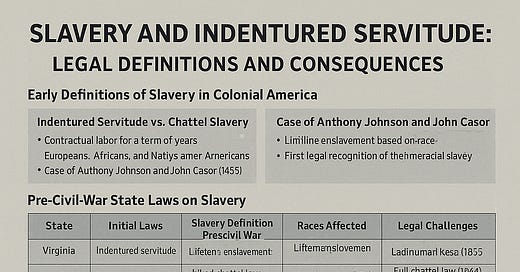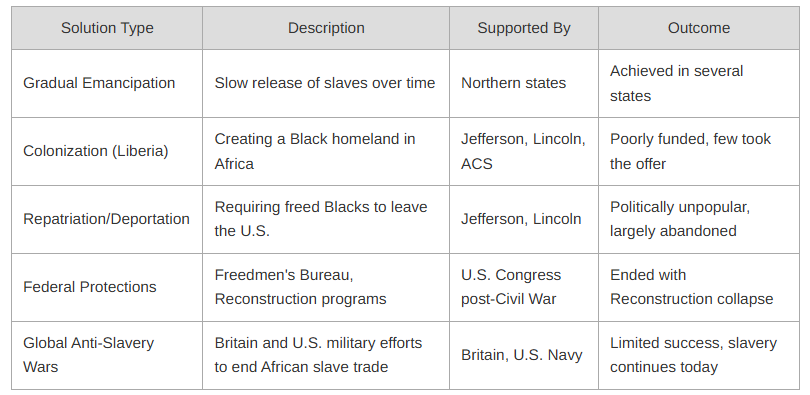Reducing hate: "Slavery, Servitude, and the ..."
Forgotten Complexities of Pre-Civil War America"
Be enlightened on this liberating topic of “Slavery, Servitude, and the Forgotten Complexities of Pre-Civil War America”, by P.S. Institute of Peace Studies
Priory of Salem, Institute of Peace Studies https://celticorthodoxy.com/2025/05/reducing-hate-slavery-servitude-and-the-forgotten-complexities-of-pre-civil-war-america/
Introduction
Slavery is often portrayed today in overly simplified terms—as a purely racial evil, uniquely inflicted by white Europeans upon Africans. Yet the true story of slavery in America, and of labor exploitation more broadly, is far more complex. From the early systems of indentured servitude, to landmark court decisions that racialized lifetime bondage, to the post-abolition struggles of all races under new economic constraints, this article aims to provide a fuller historical picture.
1. Early Definitions of Servitude in Colonial America
In the 17th century, labor in the American colonies began primarily through indentured servitude. Men and women from Europe and Africa signed contracts to work for a set number of years in exchange for passage to the New World or the promise of land. Initially, this system did not discriminate by race. European, African, and even Native American servants could work their way to freedom.
This changed with the 1655 court case of Anthony Johnson v. John Casor. Johnson, a free African landowner in Virginia, successfully argued that Casor, another African, was his property for life. This marked the first legal recognition of lifetime racialized chattel slavery in what would become the United States.
2. State-by-State Legal Evolution
While slavery expanded in the South, several states began to push back. Yet even in states moving toward emancipation, the picture was not entirely clear-cut.
3. Lincoln and the Real Motivations of the Civil War
Despite popular belief, slavery was not the initial cause of the Civil War. President Lincoln stated repeatedly that his primary goal was to preserve the Union, not to abolish slavery. His early war efforts were focused on collecting federal taxes and tariffs from the seceding states. The Emancipation Proclamation of 1863 came two years into the war, reframing the conflict to include the abolition of slavery as a Union war aim.
4. Solutions Considered for Freed Slaves
Throughout U.S. history, multiple solutions for integrating or relocating freed Black Americans were proposed:
5. Post-Abolition Labor Systems and Community Survival
While formal slavery ended, coercive labor systems continued in various forms:
Indentured servitude for European immigrants persisted.
Apprenticeship laws kept freed Black children in dependency.
Sharecropping and company towns trapped workers in debt cycles.
These systems were not unique to any one race. European, Black, and other communities all faced economic models that mimicked servitude. Even today, many live in crowded homes or participate in informal labor arrangements that resemble quiet contracts of mutual dependency.
Such practices, while sometimes exploitative, are often rooted in community survival and mutual support. Yet they also face increasing legal and regulatory barriers, making it harder for communities to help each other without risking legal consequences.
Conclusion: Toward a Balanced Historical Understanding
America's history of labor is not a simple story of white oppressors and Black victims. It is a complex narrative of human struggle, involving all races, all regions, and all economic classes. Recognizing this broader picture can help society move beyond racial guilt narratives and toward true empowerment, economic self-determination, and community resilience for all.
The fight to end slavery was real, costly, and led by the very nations often vilified today. The challenge now is to recognize that while the laws have changed, human dependency systems—both voluntary and coerced—still shape our society. Understanding these patterns is the first step toward building a more honest and sustainable future for everyone.






The American Civil War happened, because Rothschild wanted to divide and conquer in order to be able to more easily control the two areas of what we know as the United States of America. Slavery was used as a plausible denial so people would believe it, but it had nothing to do with slavery.
President Lincoln refused to borrow from Rothschild to fund the war; instead he went to the banks to ask if they would back his greenbacks; they did. Because he didn't borrow from Rothschild is why he was assassinated by Rothschild agent John Wilkes Booth.